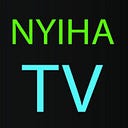The Intersection of Digital Equity and Equal Opportunity by Dr. Steeve Coupeau
5G Wi-Fi opens up a new world of opportunities to families and businesses with its high-speed, high-capacity and low latency connectivity.
Equal access to digital resources is a critical issue of racial and economic equity. It is essential that all New Yorkers secure equal access to broadband service to fully participate and engage in digital life — for work, for school and to connect with family and friends. But the digital divide persists. At the National Association of Counties annual conference on July 9, 2021, Vice President Kamala Harris stated that “when Americans are cut off from high-speed internet, they are, in fact, cut off from opportunity”. The 2019 American Community Survey found that 36 percent of New Yorkers earning $25,000 or less do not have in-home broadband subscriptions. The appalling persistence of digital inequities, if left unaddressed, will thwart the recovery of many neighborhoods.
Not all communities are affected equally by digital inequities. Lack of broadband access affects low-income New Yorkers, older adults and BIPOC households and the consequences are dire. Many families also live in broadband deserts or lack home computers. Lack of broadband access at home causes educational deficits for children and youths who cannot engage in remote learning. According to N.Y. Rep. Jamaal Bowman, as many as 1 in 3 New York Black adults do not have broadband in their homes.
The “New NY Broadband Program did not meet its goal to close the internet gap because of poor planning and execution,” New York State Comptroller Thomas P. DiNapoli said in a press release (dated July 01, 2022) regarding his office’s audit which covered the period from January 2016 through November 2021 (Report 2020-S-19 / July 2022). The Empire State Development-run program “fell short of achieving its overall goal of providing statewide broadband availability” stated DiNapoli.
The Affordable Connectivity Program (ACP) offers a unique opportunity to bridge the digital divide. Benefits include: (1) Up to $30/month discount for broadband service for households located outside of qualifying tribal lands; (2) Up to $75/month discount for households on qualifying tribal lands; (3) A one-time discount of up to $100 for a laptop, tablet, or desktop computer (with a co-payment of more than $10 but less than $50). The ACP was created in the Infrastructure Investment and Jobs Act.
However, getting people connected involves more than enhancing broadband availability and affordability. It also involves digital literacy training to address skills gaps. Trainings are directly mapped to outcome metrics such as personal and business growth. Outreach to hard-to-reach populations to spread awareness of the ACP is crucial to increase the number of households with access to broadband internet at home.
